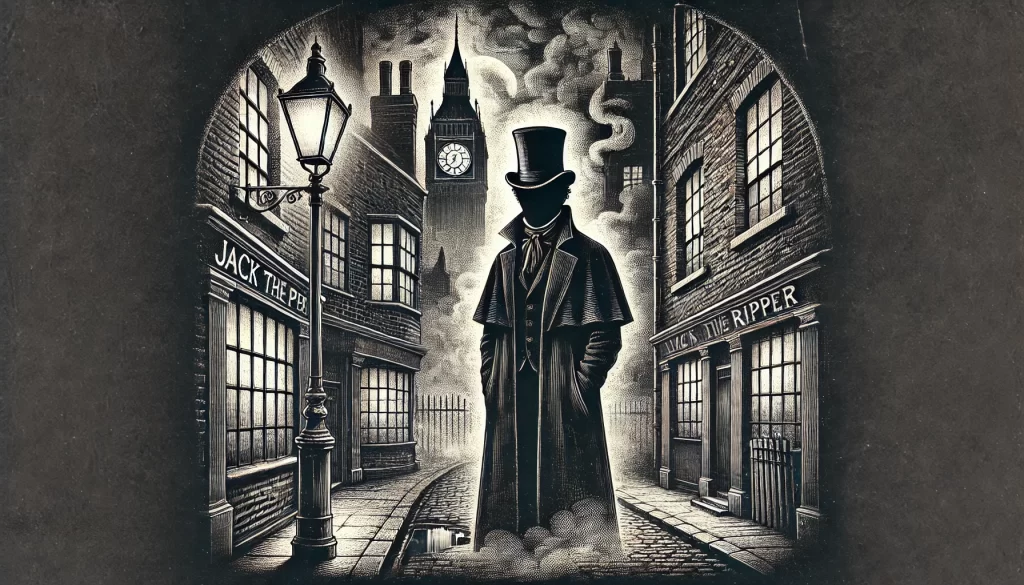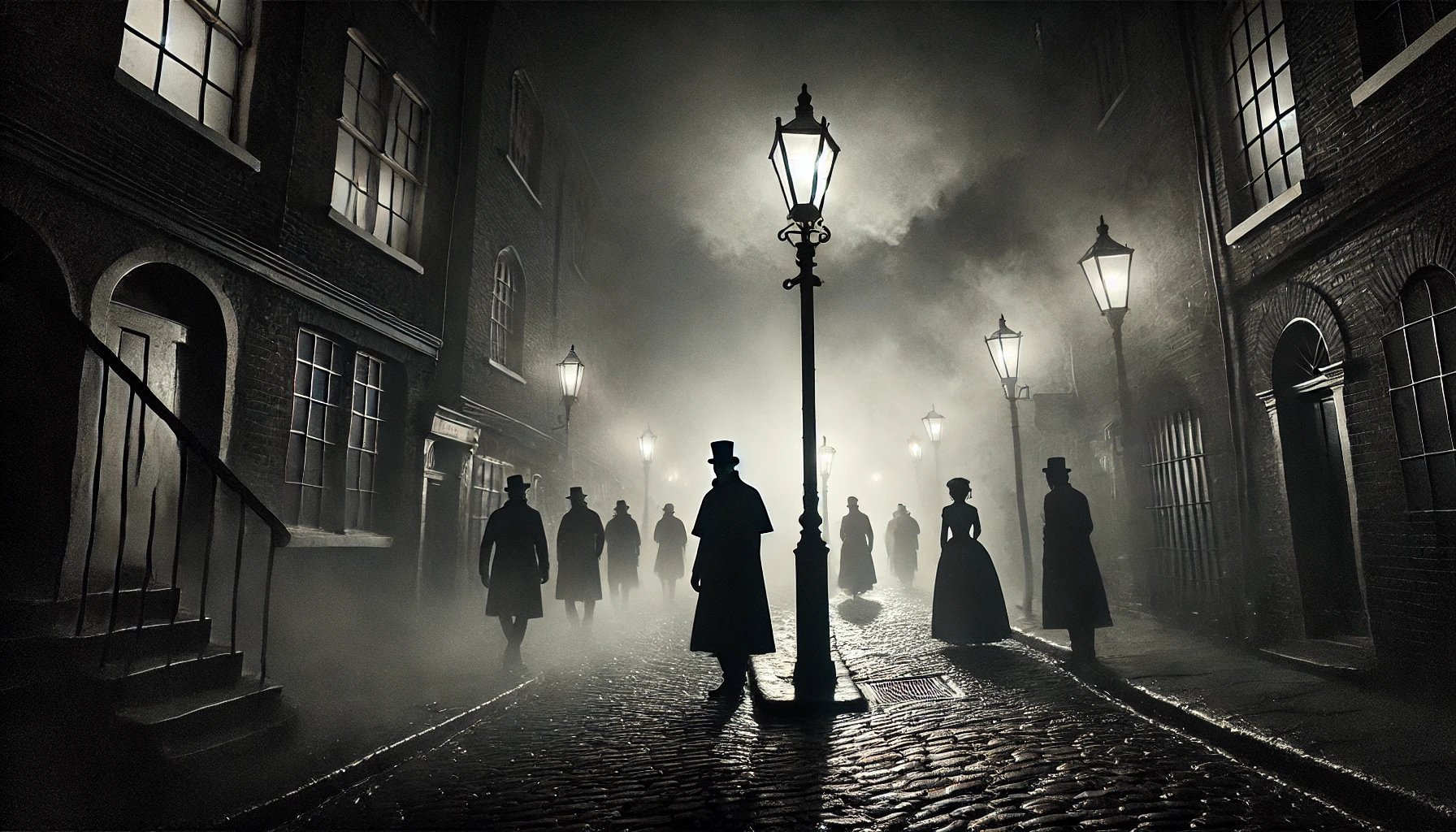In the fog-laden streets of Victorian London, a name whispered in fear and intrigue echoed through the narrow alleys of Whitechapel: Jack the Ripper. This moniker, synonymous with mystery and horror, belonged to an unidentified serial killer whose gruesome acts of murder during the autumn of 1888 left an indelible mark on the annals of criminal history. Over a century later, Jack the Ripper remains a captivating figure in both historical and popular culture, symbolizing the dark underbelly of a city and era often romanticized for its progress and elegance.
The Murders
The chilling saga of Jack the Ripper began on August 31, 1888, with the discovery of Mary Ann Nichols’ mutilated body in Buck’s Row. Over the next few months, four more women—Annie Chapman, Elizabeth Stride, Catherine Eddowes, and Mary Jane Kelly—would fall victim to his brutal assaults. The murders were characterized by their gruesome nature; the killer not only took the lives of these women but also mutilated their bodies in a manner that suggested a macabre understanding of human anatomy.
Each crime scene painted a harrowing picture of the Ripper’s brutality. Mary Ann Nichols was found with her throat slashed and abdomen partially opened. Annie Chapman suffered similar fate with added disembowelment. Elizabeth Stride’s death, though equally violent, seemed interrupted, which some speculate allowed Catherine Eddowes’ murder to follow swiftly, featuring even more horrific mutilations. The crescendo of the Ripper’s violence peaked with Mary Jane Kelly, whose body was so extensively mutilated that it was almost unrecognizable.
The Investigation
The Metropolitan Police, led by Inspector Frederick Abberline, faced immense pressure to solve the case. Despite their efforts, the investigation was hampered by the limitations of contemporary forensic science and an environment of social upheaval. The Ripper’s ability to navigate the labyrinthine streets of Whitechapel and his apparent understanding of police procedures only added to the frustration.
The police received hundreds of letters claiming to be from the Ripper, but only a few stood out. Among these, the “Dear Boss” letter, the “Saucy Jacky” postcard, and the “From Hell” letter were particularly notable. The “From Hell” letter, sent along with a piece of a human kidney, heightened the macabre fascination with the case. Despite these taunts, the true identity of Jack the Ripper remained elusive.
Suspects and Theories
The list of suspects in the Jack the Ripper case is extensive, reflecting the myriad theories that have emerged over the years. Some of the most prominent suspects include:
- Montague John Druitt: A barrister and teacher whose suicide shortly after the last canonical murder raised suspicions. Some believe his mental instability made him a viable suspect.
- Aaron Kosminski: A Polish immigrant and barber with a known hatred for women and mental health issues. Modern DNA analysis of a shawl purportedly linked to one of the victims has pointed towards Kosminski, though the evidence remains controversial.
- Prince Albert Victor: Grandson of Queen Victoria, also known as the Duke of Clarence. Conspiracy theories suggest he was involved in the murders, but these theories are widely discredited by historians.
- James Maybrick: A Liverpool cotton merchant whose purported diary, discovered in 1992, confessed to the murders. The authenticity of the diary is heavily disputed.
- Walter Sickert: An artist whose paintings and alleged confessions to friends have implicated him. However, most scholars dismiss Sickert as a serious suspect.
Other theories propose that the Ripper could have been a butcher, a doctor, or even a woman, often referred to as “Jill the Ripper.” The diversity of suspects and the lack of concrete evidence ensure that the mystery remains unsolved.

The Legacy
Jack the Ripper’s legacy endures through the vast body of literature, films, and academic research dedicated to uncovering his identity. The murders highlighted the stark social inequalities of Victorian London, where the impoverished residents of Whitechapel lived in squalor while the affluent enjoyed the benefits of the Industrial Revolution. The case also spurred advancements in forensic science and policing, as the limitations of the Ripper investigation exposed the need for more sophisticated investigative techniques.
The fascination with Jack the Ripper also reflects a broader societal intrigue with the macabre and the unknown. The Ripper’s ability to evade capture and the sheer brutality of his crimes create a compelling narrative that continues to captivate the public imagination. The mystery of his identity and motives invites endless speculation, ensuring that Jack the Ripper remains a perennial figure in true crime lore.
The story of Jack the Ripper is a chilling reminder of the darkness that can lurk within urban landscapes. His reign of terror in the autumn of 1888 exposed the vulnerabilities of a society in transition and left an indelible mark on the history of crime. Despite the passage of time and advances in forensic science, the identity of Jack the Ripper remains one of history’s most enduring mysteries. As long as there is curiosity about the human psyche and the shadowy corners of history, the legend of Jack the Ripper will continue to haunt and intrigue.










